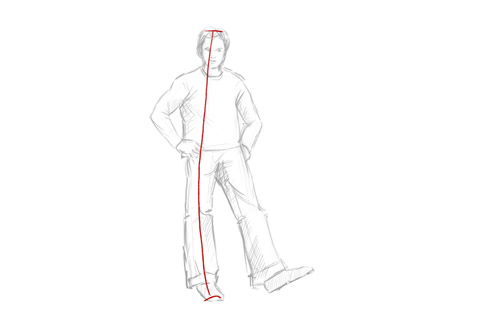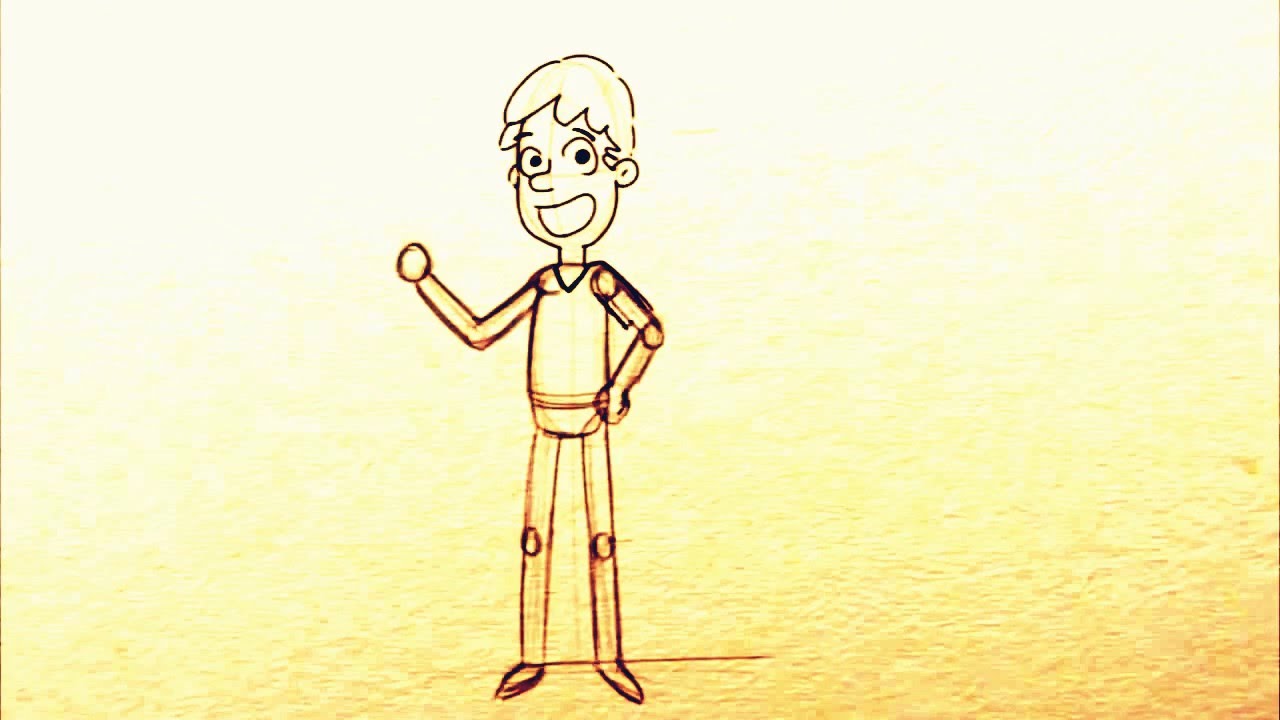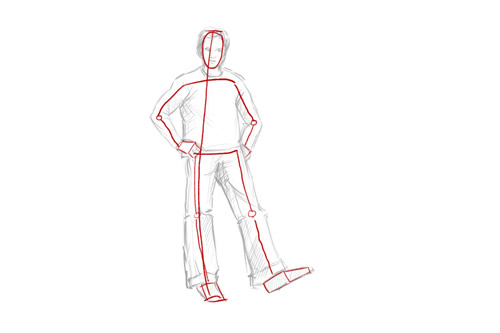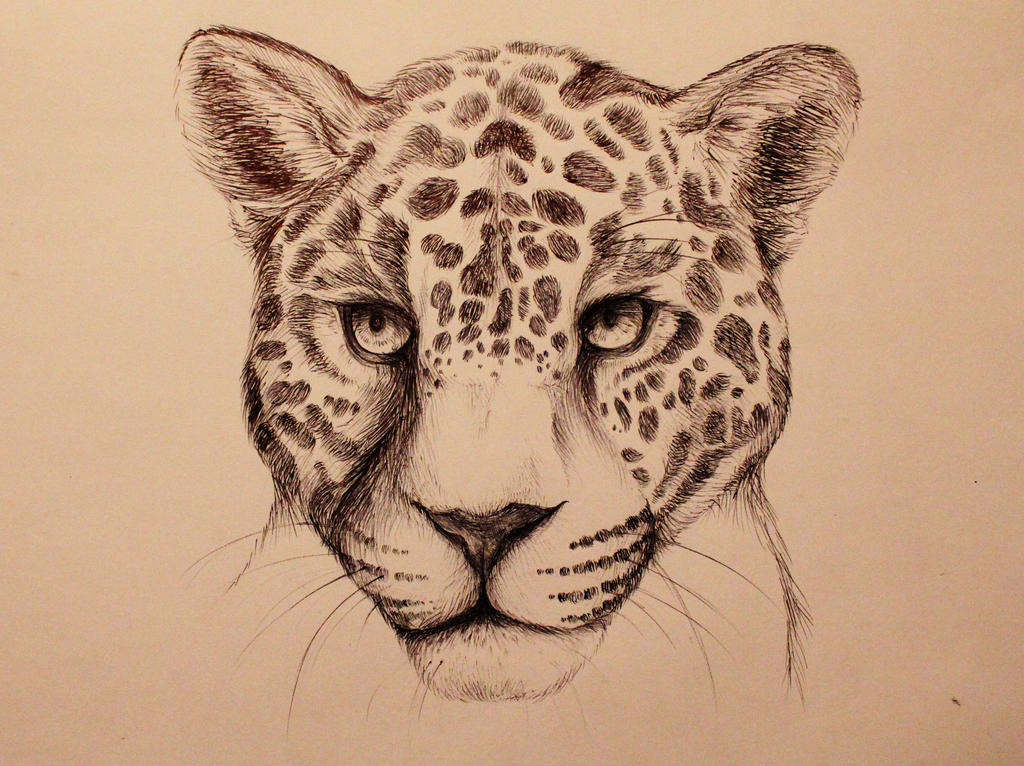easy drawings of people standing 186414 easy drawing of people
Table of Contents
Table of Contents
If you’re looking to improve your drawing skills, one of the essential skills to master is learning how to draw a person standing. It may seem daunting at first, but with the right techniques and practice, you’ll soon be able to create realistic human figures in various poses.
Pain Points
Many beginners struggle with drawing a person standing due to the complexity of the human body’s proportions and angles. Getting the proportions right can be frustrating, resulting in distorted and unrealistic figures. Additionally, capturing the correct posture, weight distribution, and movement can be a struggle for beginners.
Targets:
To draw a person standing, you need to start with a solid foundation of basic shapes and lines that will serve as your guide. The first step is to draw a line for the spine, followed by lines for the arms, legs, and hips. From there, you can create the outline of the body by connecting the lines to form a rough figure. Once you have a basic outline, you can refine the features by adding details such as facial features, clothing, and shading.
Step-by-Step Guide:
1. Start with a vertical line that represents the spine.
 2. Draw two lines slightly curved from the spine to represent the shoulders.
2. Draw two lines slightly curved from the spine to represent the shoulders.
 3. Draw two lines for the arms and two more for the legs.
3. Draw two lines for the arms and two more for the legs.
 4. Next, add details such as the facial features, clothing, and shading to your figure.
4. Next, add details such as the facial features, clothing, and shading to your figure.
 Step-by-Step with Personal Experience
Step-by-Step with Personal Experience
One technique that has helped me improve my skills in drawing a person standing is practicing with different poses and angles. I usually start with a stick figure representation of the intended pose, focusing on getting the proportions right before adding more detail. Then, I gradually add more details, such as clothing and facial features, to complete the drawing. It’s essential to break down complex poses into simple shapes and lines to make the process more manageable.
Common Mistakes and Tips
One common mistake beginners make when drawing a person standing is focusing too much on the details and neglecting the overall proportions. To avoid this, start with the basic shapes and lines as your guide, gradually refining the details as you go along. Another helpful tip is to study the human body’s anatomy to understand how the bones and muscles work together to create various poses and movements.
Proportions and Angles
When drawing a person standing, it’s essential to pay attention to the proportions and angles to create a realistic representation. For example, the weight distribution changes with different poses, affecting the hips, legs, and shoulders’ position. Additionally, understanding the correct angles of the limbs’ joints can help create more dynamic and natural-looking figures.
Shading and Textures
Adding shading and textures to your drawing can bring it to life, creating depth and dimension. Start by identifying the light source and adding shadows to the areas that are not directly facing the light. You can also experiment with different textures to add more interest to your artwork, such as using crosshatching or stippling techniques to create a range of tones and textures.
Question and Answer
1. How do I get the proportions right when drawing a person standing?
Start with a basic framework of shapes and lines that represent the spine, limbs, and other body parts. Use reference images to help you determine the correct proportions and adjust accordingly. Practice regularly to refine your skills in getting the proportions right.
2. How can I make my drawings more dynamic and natural-looking?
Pay attention to the angles of the limbs’ joints and their corresponding position to create more fluid and natural-looking figures. Experiment with different poses and angles to develop a better understanding of how the body moves and adapts to different poses and movements.
3. How can I add shading and texture to my drawings?
Start by identifying the light source and adding shadows and highlights to create depth and dimension. You can experiment with different shading techniques such as crosshatching, stippling, or blending to create different textures and tones.
4. What are some common mistakes beginners make when drawing a person standing?
One common mistake is focusing too much on the details and neglecting the overall proportions. Another mistake is overcomplicating poses that end up looking distorted and unnatural. To avoid these, start with basic shapes and lines as your guide and gradually refine the details as you go along.
Conclusion of How to Draw a Person Standing
Drawing a person standing may seem challenging, but with practice and patience, it’s a skill that anyone can master. Focus on getting the proportions and angles right, start with a basic framework, and gradually refine the details to create a realistic and dynamic representation of the human body. As with any skill, practice is key to improving, so keep practicing and experimenting with different poses to develop your skills even further.
Gallery
How To Draw A Person - Standing

Photo Credit by: bing.com / person draw standing step line feet shoulders thevirtualinstructor
Person Standing Drawing At GetDrawings | Free Download

Photo Credit by: bing.com / person drawing draw easy standing step getdrawings simple beginners way cute
How To Draw A Person - Standing

Photo Credit by: bing.com / person drawing draw sketch stick standing man figure simple sketches paintingvalley step gingerbread drawings dog demonstrate whole process featured thevirtualinstructor
[最も好ましい] Easy Drawings Of People Standing 186414-Easy Drawing Of People
![[最も好ましい] easy drawings of people standing 186414-Easy drawing of people [最も好ましい] easy drawings of people standing 186414-Easy drawing of people](https://i.ytimg.com/vi/Xg5zzIV9XXc/maxresdefault.jpg)
Photo Credit by: bing.com /
Step By Step Drawing A Person At GetDrawings | Free Download

Photo Credit by: bing.com / drawing person step draw getdrawings
 Step-by-Step with Personal Experience
Step-by-Step with Personal Experience




